Related Research Articles

Championship Auto Racing Teams (CART) was a sanctioning body for American open-wheel car racing that operated from 1979 until dissolving after the 2003 season. CART was founded in 1979 by United States Auto Club (USAC) Championship Division team owners who disagreed with the direction and leadership of USAC, with the then-novel idea of car owners sanctioning and promoting their own series collectively instead of relying on a neutral body to do so. Through the 1980s, the Indy Car World Series became the pre-eminent open-wheel auto racing series in North America, featuring street circuits, road courses, and oval track racing. CART drivers continued to compete at the USAC-sanctioned Indianapolis 500.
A rookie is a person new to an occupation, profession, or hobby. In sports, a rookie is a professional athlete in their first season.

The United States Auto Club (USAC) is one of the sanctioning bodies of auto racing in the United States. From 1956 to 1979, USAC sanctioned the United States National Championship, and from 1956 to 1997 the organization sanctioned the Indianapolis 500. USAC serves as the sanctioning body for a number of racing series, including the Silver Crown Series, National Sprint Cars, National Midgets, Speed2 Midget Series, .25 Midget Series, Stadium Super Trucks, and Pirelli World Challenge. Seven-time USAC champion Levi Jones is USAC's Competition Director.
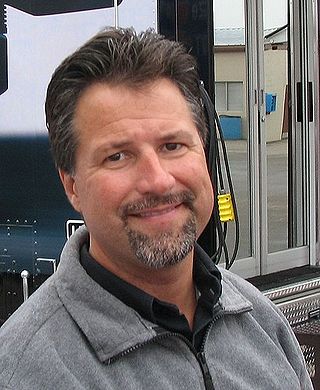
Michael Mario Andretti is an American former racing driver, and current team owner. Statistically one of the most successful drivers in the history of American open-wheel car racing, Andretti won the 1991 CART championship, and amassed 42 race victories, the most in the CART era and fourth-most all time. Since his retirement, Andretti has owned Andretti Autosport, which has won four IndyCar Series championships and five Indianapolis 500 races. He is the son of Mario Andretti, a multi-time champion, and is the father of IndyCar Series driver Marco Andretti.
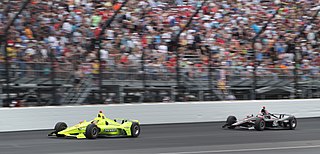
American open-wheel car racing, also known as Indy car racing, is a category of professional automobile racing in the United States. As of 2024, the top-level American open-wheel racing championship is sanctioned by IndyCar. Competitive events for professional-level, open-wheel race cars have been conducted under the auspices of various sanctioning bodies, tracing its roots as far back as 1902. A season-long, points-based, National Championship of drivers has been officially recognized in 1905, 1916, and each year since 1920. As such, for many years, the category of racing was known as Championship Car racing. That name has been permanently retired, and the term Indy car racing has become the preferred moniker.
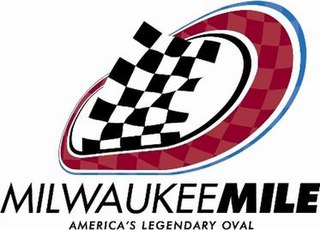
The Milwaukee Mile is a 1.015 mi (1.633 km) oval race track in the central United States, located on the grounds of the Wisconsin State Fair Park in West Allis, Wisconsin, a suburb west of Milwaukee. Its grandstand and bleachers seats approximately 37,000 spectators. Paved 70 years ago in 1954, it was originally a dirt track. In addition to the oval, there is a 0.8 mi (1.3 km) road circuit located on the infield.
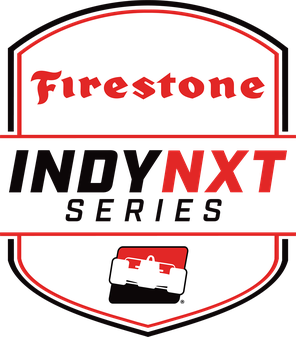
Indy NXT, previously Indy Lights, is an American developmental automobile racing series sanctioned by IndyCar, currently known as INDY NXT by Firestone for sponsorship reasons. Indy NXT is the highest step on the Road to Indy, a program of racing series leading up to the IndyCar Series.

The 1996 Indy Racing League was the first season in the history of the series, which was created and announced on March 11, 1994 by the Indianapolis Motor Speedway, as a supplementary Indy-car series to the established Indy Car World Series sanctioned by Championship Auto Racing Teams (CART) since 1979. It consisted of only three races, as the season concluded with the 80th Indianapolis 500 in May. Walt Disney World Speedway was completed in time to host the first ever event of the Indy Racing League (IRL), and Phoenix International Raceway switched alliances from CART to the IRL, in order to host the second event of the season. At the conclusion of the three-race schedule, Scott Sharp and Buzz Calkins ended up tied for first place in the season championship. With no tiebreaker rule in place, the two drivers were declared co-champions. Its creation, and the opposition of Indy Car's teams and drivers to take part in it, marked the start of 'the Split', a 12-year period of competition between rival series at the top level of American Open Wheel racing that had lasting negative effects in the sport.

Hemelgarn Racing is an American auto racing team owned by Ron Hemelgarn. The team debuted in 1985, and competed in the CART and Indy Racing League ranks until the team originally shut down in 2010. The team returned to competition in 2015, and currently competes full-time in the USAC Silver Crown Series with driver Justin Grant. Grant won the 2020 championship for the team.
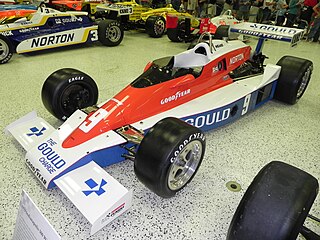
The 63rd 500 Mile International Sweepstakes was held at the Indianapolis Motor Speedway in Speedway, Indiana, on Sunday May 27, 1979. Second-year driver Rick Mears took the lead for the final time with 18 laps to go, and won his first of four Indianapolis 500 races. It was also Mears' first of a record six Indy 500 pole positions. Brothers Al and Bobby Unser combined to lead 174 of the 200 laps, but Al dropped out around the midpoint, and Bobby slipped to 5th place at the finish nursing mechanical issues. It was also Roger Penske's second Indy 500 victory as a car owner.
Richard Raymond Simon is retired American auto racing driver and racing team owner. Simon drove Indy cars in USAC and CART, and made 17 starts at the Indianapolis 500. At the 1988 Indianapolis 500, Simon set a record as the oldest driver in Indy 500 history, a record that was later broken by A. J. Foyt.

The 1984 CART PPG Indy Car World Series season, the sixth in the CART era of U.S. open-wheel racing, consisted of 16 races, beginning in Long Beach, California on March 31 and concluding in Las Vegas, Nevada on November 10. The PPG Indy Car World Series Drivers' Champion was Mario Andretti and the Indianapolis 500 winner was Rick Mears. Rookie of the Year was Roberto Guerrero. The 68th Indianapolis 500 was sanctioned by the USAC, but counted in the CART points standings.

The 1990 CART PPG Indy Car World Series season was the 12th national championship season of American open wheel racing sanctioned by CART. The season consisted of 16 races, and one non-points exhibition event. Al Unser Jr. was the national champion, and the rookie of the year was Eddie Cheever. The 1990 Indianapolis 500 was sanctioned by USAC, but counted towards the CART points championship. Arie Luyendyk won the Indy 500, his first-ever victory in championship-level competition, and the fastest 500 until the 2013 Indianapolis 500.

The 1980 CART PPG Indy Car World Series season was the second in the CART era of U.S. open-wheel racing. It consisted of twelve races, beginning in Ontario, California on April 13 and concluding in Avondale, Arizona on November 8. The PPG Indy Car World Series Drivers' Champion and Indianapolis 500 winner was Johnny Rutherford. Rookie of the Year was Dennis Firestone. The entire season, including the 64th Indianapolis 500, was to be co-sanctioned by both the USAC and CART under the banner of the Championship Racing League (CRL). However, USAC withdrew from the arrangement after five races.

The 1989 CART PPG Indy Car World Series season was the 11th national championship season of American open wheel racing sanctioned by CART. The season consisted of 15 races, and one non-points exhibition event. Emerson Fittipaldi was the national champion, and the rookie of the year was Bernard Jourdain. Fittipaldi became the second driver after Mario Andretti to win the Formula One World Championship and the CART championship.
The 1979 USAC Championship Car season consisted of seven races, beginning in Ontario, California on March 25 and concluding in West Allis, Wisconsin on August 12. The USAC National Champion was A. J. Foyt and the Indianapolis 500 winner was Rick Mears. With the exception of the Indianapolis 500, most top drivers instead competed in races sanctioned by CART.

The 1996 U.S. 500 was a CART series race held at Michigan International Speedway in Brooklyn, Michigan on Sunday May 26, 1996. It was the sixth round of the 1996 CART PPG Indy Car World Series season, and was run on the same day as the 1996 Indianapolis 500. Jimmy Vasser of Chip Ganassi Racing won the race from the pole position. It marked the first and only time that two 500-mile Indy car races were held at Michigan in the same season, alongside the traditional Michigan 500, which was held two months later on July 28.

IndyCar, LLC, is an American-based auto racing sanctioning body for American open-wheel car racing. The organization sanctions two racing series: the premier IndyCar Series with the Indianapolis 500 as its centerpiece, and the developmental series Indy NXT. IndyCar is recognized as a member organization of the FIA through ACCUS.
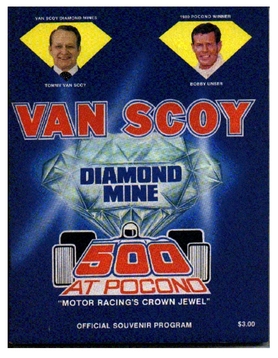
The 1981 Pocono 500, the 11th running of the event, was held at the Pocono Raceway in Long Pond, Pennsylvania, on Sunday, June 21, 1981. Branded as the 1981 Van Scoy Diamond Mine 500 for sponsorship reasons, the race is notable as the final win for all-time IndyCar race winner, A. J. Foyt. It is also notable for its role in the confrontation between separate Indy car racing sanctioning bodies, USAC and CART, as well as the inclusion of older indycars and 8 front-engined dirt cars from the USAC Silver Crown Series in the race.
References
- ↑ Conrad, Mark (March 29, 2000). "NFL Players Seek Alliance With Game Officials". New York: Sportslaw News. Archived from the original on April 22, 2003. Retrieved 2008-12-26.
- ↑ "Replacement Players". Major Leagues Baseball Almanac. Retrieved 2008-12-26.
- ↑ "U.S. replacement soccer players shall remain nameless". Chicago Tribune . AP. January 18, 2005. p. 4-2. Retrieved October 2, 2021– via newspapers.com.
- ↑ Delgado, Joey (January 22, 2005). "Soccer Notebook: World Cup update". The Salinas Californian . p. 18. Retrieved October 2, 2021– via newspapers.com.
- ↑ "Én spiller på Norges A-landslag i fotball har testet positivt på korona" (in Norwegian Bokmål). Dagsavisen. 13 November 2020. Retrieved 26 December 2023.
- ↑ "Debuterer med nødlandslaget: – En spinnvill situasjon" (in Norwegian Bokmål). NRK. 15 November 2020. Retrieved 26 December 2023.
- ↑ "Slik hylles nødlandslaget: – Dette er så vakkert" (in Norwegian Bokmål). NRK. 18 November 2020. Retrieved 26 December 2023.
- ↑ "About NHLOA". National Hockey League Officials Association. Archived from the original on 2012-11-14. Retrieved 2008-12-26.
- ↑ Lasky, Matthew J. (August 1999). "Major League Umpires Blow Call". Fmew.com. Archived from the original on 2002-12-27. Retrieved 2008-12-26.
- ↑ "Six more will split $2.3M in severance pay". MLB. New York: ESPN. Associated Press. 2004-12-24. Retrieved 2008-12-26.
- ↑ Archived March 6, 2005, at the Wayback Machine
- ↑ Boycotted race in '69 led to surprise winner, changes
- ↑ "1981 Pocono 500 Photo Page". Archived from the original on 2012-09-19. Retrieved 2012-01-31.
- ↑ Hungess, Carl (1996). The 1996 Indianapolis 500 Yearbook. Carl Hungness Publishing. ISBN 0-915088-78-9.